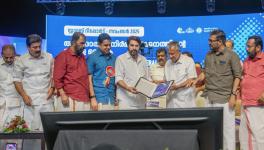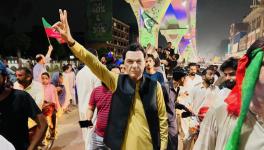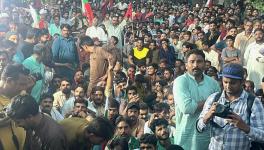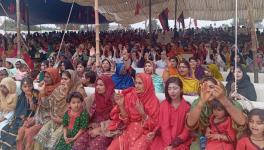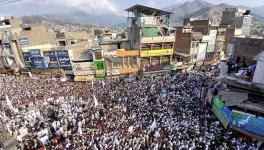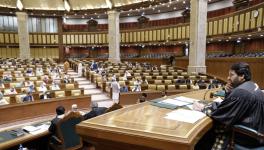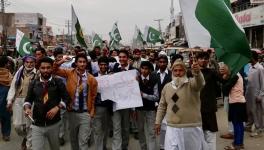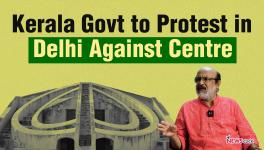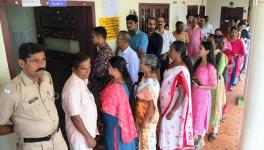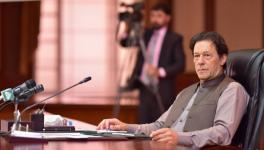Pakistan set for Polls Amid Popular Resentment Against Country’s Elites
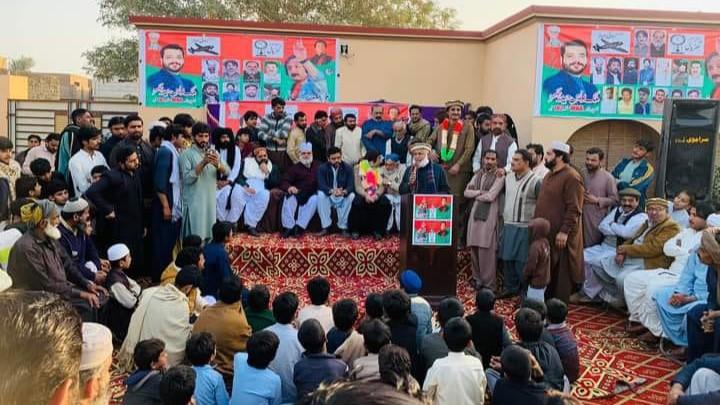
After a delay of over four months and a number of political ups and downs, Pakistan is finally heading towards the national elections on February 8. Elections will be held for the National Assembly, the lower house of the parliament, as well as all the provincial assemblies.
Addressing the uncertainty related to dates, the head of the Election Commission of Pakistan (ECP), Sikandar Sultan Raja, said on Thursday, February 1, that despite security concerns in certain provinces such as in Khyber Pakhtunkhwa (KP) and Balochistan, the elections will be held as scheduled.
The elections are held amid a growing perception among people about the denial of a fair chance to former Prime Minister Imran Khan and his party, Pakistan Tehreek-e-Insaf (PTI), along with undue electoral engineering. However, the people remain equally critical of the track record of the political elite in the country which has failed to address most of their basic problems.
The electoral process
Pakistan has a parliamentary form of government with a bicameral parliament, consisting of the National Assembly and the Senate. The nation-wide elections on February 8 will elect members of the National Assembly (MNA) and four provincial assemblies, Punjab, Sindh, KP and Balochistan.
There are 336 seats in the National Assembly, out of which 266 are directly elected through single member constituencies in the first-past-the-post system. There are 60 seats reserved for women and 10 for minorities. Seats reserved for women are allocated proportionally to parties according to the number of seats they have won in each province. The seats reserved for minorities are allocated proportionally to the parties according to the number of overall seats they have won.
The elected members of the provincial assemblies elect 100 members of the upper house of the parliament in Pakistan, the Senate.
The party or alliance which gets the majority of seats in the National Assembly will get to elect its leader who will be the prime minister.
Around 128 million Pakistanis are eligible to vote with the majority being young voters.
Major parties and issues
There are four major parties contesting the elections apart from several smaller parties. These are the Pakistan People’s Party (PPP) led by Bilawal Bhutto Zardari, Pakistan Muslim League (Nawaz) led by Nawaz Sharif, Jamiat Ulema-e-Islam (Fazl) led by Maulana Fazlul Haq, and Pakistan Tehreek- e-insaf (PTI) led by Imran Khan.
PTI had emerged as the largest party in the National Assembly in the last elections held in 2018 and Imran Khan was elected as prime minister. However, this year, the ECP has denied the PTI its electoral symbol, cricket bat, leaving most of its candidates to contest the election as independents. Imran Khan has been convicted in three cases and sentenced to spend three, 10, and 14 years in jail respectively. He was disqualified to contest in the current elections by the ECP. Later the court barred him from holding any public office for the next 10 years.
Most working class Pakistanis think that price-hike, poverty and organized exploitation, injustice, corruption, and selective implementation of laws and policies remain the most important issues. However, the PTI has attempted to make the elections a contest between Imran Khan and the rest by pushing the public perception of political persecution by the powerful army and other political class under external, namely the US, pressure.
Imran Khan’s incarceration, alleged interference by Pakistan’s Army in the country’s political process, Pakistan’s sovereignty, and independent foreign policy remains PTI’s larger pitch during the election campaign. It has also tried to present a comparison between the performance of Khan’s tenure as prime minister with that of Prime Minister Shehbaz Shehbaz of the Pakistan Muslim League (Nawaz), particularly highlighting how Khan was able to tackle the challenges presented during the COVID-19 outbreak.
PTI, through its social media campaigns, has made the rise in cost of essential services such as electricity under the Pakistan Democratic Movement (PDM) government, led by Shehbaz Sharif between April 2022 and August 2023, a key issue.
However, given the fact that PTI candidates are forced to contest as independents, it is difficult for them to mobilize the party support behind them.
Former PDM allies PPP and PML (N), who came together to oust Imran Khan from power in April 2022, are now contesting separately. They have both pitched the alleged corruption of PTI as their major electoral plank apart from promising better economic conditions for the Pakistanis, who have faced gradually deteriorating economic prospects in the last few years, particularly after signing a USD 3 billion loan deal with IMF.
PML (N) is confident of better performance in the elections after Pakistan’s Supreme Court lifted the ban on former prime minister Nawaz Sharif in January, raising his chances of coming to power once again.
Apart from the Awami National Party led by Asfandar Wali Khan which had two MNAs in the last election, the left in Pakistan’s politics is represented by an alliance called the Left Democratic Front (LDF). The Mazdoor Kisan Party and Haqooq-e-Khalq are two major constituents which have put their candidates in certain seats.
Most of the other parties have limited regional influence.
Opinion Polls
Most electoral observers believe no party will win a clear majority in the polls. Among all the parties and prime minister candidates, PTI and Imran Khan remain the most popular though.
According to a Gallup poll in December, both the PTI and Imran Khan were leading in most of the provinces and at the national level. Gallup noticed that the gap in popularity between PTI and others has been narrowing gradually in the last few months.
It is expected that Nawaz Sharif’s return to the country and PTI’s lack of electoral symbol may boost the chances of PML (N) at the cost of Imran Khan and PTI.
Polls also indicate that PTI’s campaign of persecution has gained popular acceptance. This has created greater interest in voting according to the survey. It says that the majority of Pakistanis, across party lines, believe that there is no level playing field for PTI.
In the previous election in 2018 the overall voting percentage was around 50%.
Get the latest reports & analysis with people's perspective on Protests, movements & deep analytical videos, discussions of the current affairs in your Telegram app. Subscribe to NewsClick's Telegram channel & get Real-Time updates on stories, as they get published on our website.









